Hiking is a great way to get exercise and enjoy the outdoors. But is it an aerobic exercise? The answer is yes, hiking can be an aerobic exercise depending on the intensity of the hike. Aerobic exercise is any type of activity that gets your heart rate up and makes you breathe harder. When your body is working harder than normal, it requires more oxygen to fuel your muscles. That’s what aerobics means- “with oxygen.”
Hiking is a great way to burn calories and improve your cardiovascular health. In fact, “Does Hiking Burn Belly Fat?” it’s been shown to help people burn belly fat as well.
When you hike, you’re constantly moving up and down hills, which elevates your heart rate and requires your lungs to take in lots of oxygen. This makes hiking an excellent form of aerobic exercise. However, the intensity of your hike will determine whether it’s an aerobic or anaerobic workout. If you’re hiking at a moderate pace and can carry on a conversation, you’re likely engaging in aerobic exercise. But if you’re hiking at a fast pace or up steep hills, you may be engaging in anaerobic exercise.
Key Takeaways
- Hiking can be both aerobic and anaerobic, depending on the intensity of the hike.
- Aerobic hiking is any type of activity that gets your heart rate up and makes you breathe harder.
- The intensity of your hike will determine whether it’s an aerobic or anaerobic workout.
Is Hiking an Aerobic Exercise?
Hiking is a fantastic way to get exercise and enjoy the great outdoors. It is a low-impact aerobic exercise that can help you burn calories, improve your cardiovascular health, and reduce stress. Here are some reasons why hiking is a great way to get exercise:
- Low-Impact Exercise: Hiking is a low-impact exercise that is easier on your joints than high-impact activities like running. It can help you build strength and endurance without putting too much strain on your body.
- Calorie Burner: Hiking is a great way to burn calories. The number of calories you burn depends on various factors like your weight, the terrain, and the intensity of your hike. On average, a person can burn around 400-700 calories per hour while hiking.
- Cardiovascular Health: Hiking is an excellent way to improve your cardiovascular health. It can help you lower your blood pressure, reduce your risk of heart disease, and improve your overall fitness level.
- Mental Health Benefits: Hiking can also have mental health benefits. It can help you reduce stress, improve your mood, and boost your self-esteem. Being in nature can have a calming effect on your mind and body.
- Accessible: Hiking is an accessible activity that can be enjoyed by people of all ages and fitness levels. There are hiking trails available for beginners as well as experienced hikers.
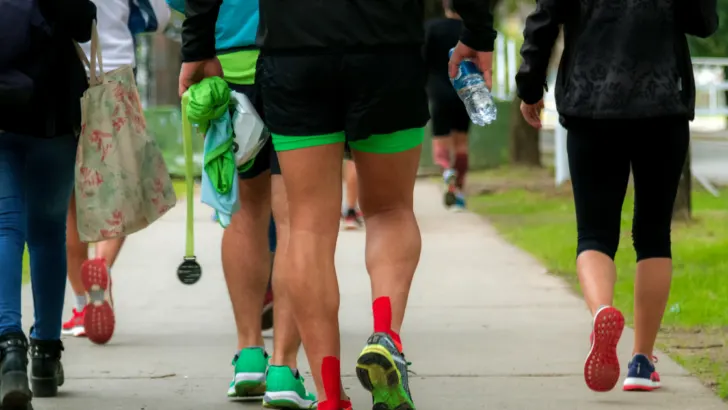
In conclusion, hiking is a great way to get exercise and enjoy the outdoors. It is a low-impact aerobic exercise that can help you burn calories, improve your cardiovascular health, and reduce stress. It is an accessible activity that can be enjoyed by people of all ages and fitness levels.
While hiking is considered an aerobic exercise, it can also be a great way to build your glutes. In fact, hiking is one of the best exercises for working your glutes and hamstrings.” in the section about the benefits of hiking “Does Hiking Build Glutes: The Truth About How Hiking Works”.
Hiking Can Be Both Aerobic And Anaerobic, Depending On The Intensity Of The Hike
When it comes to determining if hiking is an aerobic or anaerobic exercise, the answer is not straightforward. It can be both, and it depends on the intensity of the hike.
If I’m hiking at a moderate pace, without pushing myself too hard, then it is considered aerobic exercise. This means that my body is using oxygen to produce energy, and my heart rate is at a level that is safe for sustained exercise. During aerobic exercise, the body burns fat and carbohydrates for energy, which can lead to improved cardiovascular health, increased endurance, and weight loss.
On the other hand, if I’m hiking at a high intensity, like going uphill or carrying a heavy backpack, then it becomes more anaerobic. During anaerobic exercise, the body relies on stored energy sources, like glycogen, to fuel the muscles. This can lead to increased muscle strength and size, as well as improved power and speed.

Hiking is unique in that it works both the aerobic (cardiovascular) and anaerobic (muscle-building) systems, making it a well-rounded form of exercise. The table below summarizes the benefits of hiking for both systems.
| Aerobic Benefits | Anaerobic Benefits |
|---|---|
| Improved cardiovascular health | Increased muscle strength and size |
| Increased endurance | Improved power and speed |
| Weight loss | Improved bone density |
Overall, hiking can be a great way to improve both cardiovascular and muscular health, depending on the intensity of the hike. It’s important to listen to my body and adjust the intensity of the hike accordingly to reap the most benefits.
Aerobic Hiking
Hiking is an excellent way to get some exercise and enjoy the great outdoors. But, is hiking an aerobic exercise? The answer is yes! Aerobic exercise is any type of activity that gets your heart rate up and makes you breathe harder. Hiking is a perfect example of an aerobic exercise that can provide numerous health benefits.
Hiking is a type of aerobic exercise, which means it helps your body use oxygen more efficiently. This can help you burn more calories and fat, including belly fat.
For more information on how hiking can help you burn belly fat, please see “Does Hiking Burn Belly Fat?”.
Aerobic Hiking Uses Large Muscle Groups In A Rhythmic, Continuous Motion For An Extended Period Of Time
When you hike, you use your legs, glutes, and core muscles to propel yourself forward. This repetitive motion of hiking uses large muscle groups in a rhythmic, continuous motion for an extended period of time. This type of exercise is perfect for improving your cardiovascular health and burning calories.
Aerobic Hiking Benefits Include
Improved Cardiovascular Health
Aerobic hiking is an excellent way to improve your cardiovascular health. When you set foot on those scenic trails, a remarkable transformation occurs within you. Your heart rate starts to soar, and with each step, your lungs work tirelessly, ensuring your muscles are abundantly supplied with life-giving oxygen. I must admit, the sense of vitality and empowerment I feel while hiking is truly unmatched.

But it’s not just an ephemeral thrill; this form of exercise bestows lasting benefits. As you make a habit of hiking regularly, you’ll notice a remarkable improvement in your heart health, strengthening it and making it more resilient. Over time, your risk of heart disease plummets, and the prospect of a healthier life becomes more tangible than ever.
What I find most remarkable about aerobic hiking is its seamless blend of fitness and serenity. As I traverse the winding trails, the rhythm of my footsteps seems to harmonize with the sounds of nature around me. My worries and stress melt away, leaving only a sense of peace and contentment. This communion with nature adds an extra layer of fulfillment to the already rewarding experience of improving my cardiovascular health.
Weight Loss
Hiking is a great way to burn calories and lose weight. Embarking on a hiking journey not only brings you closer to nature but also becomes a remarkable calorie-burning adventure, leading you toward your weight loss goals in the most fulfilling way. It’s awe-inspiring to witness how, depending on your body weight and the intensity of your hike, you can torch away an impressive 400-700 calories per hour! This revelation, in itself, fuels my excitement for every hiking expedition.
Yet, the wonders of hiking go beyond immediate calorie burn. I’ve observed firsthand how this exhilarating activity helps sculpt and strengthen my muscles. As I traverse those challenging terrains, my muscles work harmoniously to conquer each obstacle, making me feel more empowered and alive with every step. And the best part? These muscles I build serve as diligent torch-bearers for my calorie-burning endeavors, even when I’m not actively hiking. It’s like having a secret ally that keeps my metabolism fired up throughout the day.

Embracing hiking as a weight loss and fitness strategy feels like finding a hidden gem, one that nourishes my body, mind, and spirit. As I explore new trails and push myself to new limits, I am rewarded not just with breathtaking views but with a sense of accomplishment and liberation that no other exercise can replicate.
Stress Reduction
Spending time in nature and getting some exercise can be an excellent way to reduce stress. Hiking can help you clear your mind, reduce anxiety, and improve your mood. As I wander along the scenic trails, I’ve experienced firsthand the magic of this remarkable fusion of exercise and tranquility, melting away stress and worries with every step.
Nature, with its enchanting allure, becomes an oasis of calmness, offering respite from the chaos of daily life. Amidst the rustling leaves and gentle whispers of the breeze, my mind finds clarity, untangling the knots of stress that often burden it. With each stride, my worries seem to dissipate, replaced by a profound sense of peace that envelops me like a warm embrace.
The therapeutic benefits of hiking on my mental state have been nothing short of astounding. Anxiety, once a constant companion, now retreats in the face of the serene landscapes that surround me. It’s as if the mountains and forests themselves hold the key to inner tranquility, and all I have to do is accept the invitation they extend.
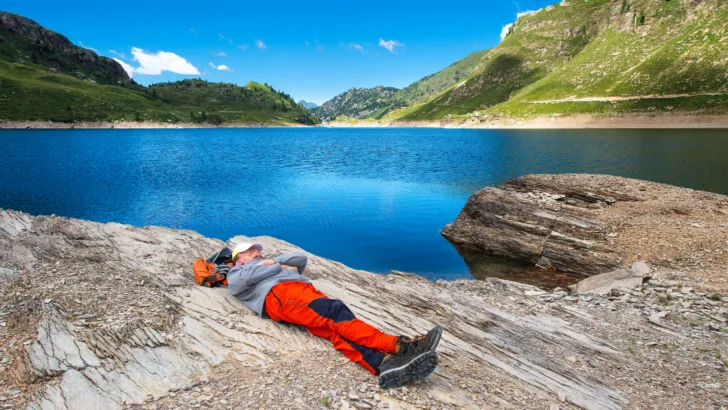
But it doesn’t stop there. Hiking has a profound effect on my mood as well. The endorphins released as I climb those trails elevate my spirits, making me feel more alive and invigorated than ever before. Even on days when life feels burdensome, a hike is all it takes to reset my emotions and regain a positive outlook.
In a world that seems to demand constant connection and productivity, hiking grants me the space to disconnect and simply be. It’s a rejuvenating ritual, a dance between my body and nature, where worries lose their grip and tranquility takes the stage.
Increased Energy Levels
Hiking can also help increase your energy levels. When you exercise, your body releases endorphins, which can help boost your mood and energy levels. As I lace up my hiking boots and set forth on the trail, I can feel my body coming to life, fueled by the magical elixir of endorphins that exercise generously bestows.
It’s awe-inspiring how every step I take activates this natural fountain of feel-good hormones, enveloping me in an uplifting embrace. The weight of fatigue and lethargy that may have burdened me earlier is effortlessly cast aside, replaced by an unstoppable surge of energy coursing through my veins.

The beauty of hiking is that it not only awakens my body but also elevates my mood to new heights. The world around me seems to come alive with vibrant colors and melodies as my spirits soar. Every obstacle along the trail becomes an exciting challenge to conquer, and with each victory, I feel a renewed sense of empowerment.
And the best part? This euphoric energy doesn’t dissipate as quickly as it arrives. Rather, it accompanies me long after I’ve returned from the hike, infusing my day with an enduring vitality that keeps me engaged and enthusiastic. It’s like having a natural source of renewable energy that keeps me going even when life throws its curveballs.
Reduced Risk Of Chronic Diseases
Regular aerobic exercise like hiking can help reduce your risk of chronic diseases like diabetes, high blood pressure, and obesity As I embark on my hiking adventures, I’ve witnessed how this invigorating activity becomes a formidable ally in the fight against diabetes, high blood pressure, and obesity.
Aerobic hiking, with its heart-pumping intensity, becomes a safeguard for my health, reducing the risk of diabetes by helping regulate blood sugar levels. Each step I take seems to reinforce my body’s defenses against this pervasive disease, empowering me to lead a healthier, more balanced life.
High blood pressure, once a worrisome specter, begins to lose its grip as I embrace the rhythm of hiking. The steady flow of oxygen-rich blood nourishes my cardiovascular system, promoting heart health and keeping hypertension at bay. The trails I traverse become pathways to longevity, enhancing the vitality of my most vital organ.

And as for obesity, hiking emerges as a potent antidote, helping me shed excess weight and maintain a healthy body mass index. The combined forces of calorie burn and muscle-building during my hikes pave the way for a fitter, leaner physique, reducing the risk of obesity-related complications.
It’s inspiring to see how hiking transcends the boundaries of a simple outdoor activity, becoming a transformative journey toward a life free from the clutches of chronic diseases. With each hike, I can feel my body becoming more resilient, my heart growing stronger, and my entire being rejuvenated.
Tips For Making Your Hikes More Aerobic
Increase The Intensity Of Your Workout By Hiking Faster Or Uphill
To make your hikes more aerobic, you can enhance the intensity of your workout. Try hiking faster or uphill to increase your heart rate and make your workout more challenging. This simple adjustment can lead to significant cardiovascular benefits and elevate your overall fitness level. Embrace the challenge and discover the joy of turning your hiking experience into a rewarding aerobic exercise.

Hike For A Longer Duration
To optimize the benefits of your aerobic hike, consider extending its duration. By spending more time on the trails, you can increase calorie expenditure and enhance your endurance. The longer you hike, the more calories you’ll burn, contributing to your fitness goals. Additionally, the extended duration allows your muscles and cardiovascular system to adapt, improving your overall stamina and endurance. So, embrace the challenge of a lengthier hike and reap the rewards of improved fitness and well-being.
Add Weight To Your Backpack
To enhance the difficulty of your hikes, try adding weight to your backpack. This straightforward approach intensifies your workout, increasing the effort required and promoting muscle development.
The additional weight challenges your body’s balance and stability, engaging more muscles throughout the hike. As a result, your heart rate rises, and the overall intensity of the workout is heightened.
Hiking with added weight provides an excellent opportunity for muscle building, particularly in your leg muscles, as they work harder to support the extra load. Over time, this resistance can lead to improved muscle strength and tone.
In conclusion, hiking is an excellent way to get some exercise and improve your health. By making your hikes more aerobic, you can increase the intensity of your workout and reap even more health benefits. So, grab your hiking boots and hit the trails!
Anaerobic Hiking
Anaerobic hiking takes your hiking experience to a whole new level, requiring quick and explosive movements that challenge both your physical capabilities and mental fortitude. It involves navigating through rugged terrains, ascending steep hills, and mastering tricky obstacles with a combination of strength, agility, and determination.
As you ascend those steep inclines, each step demands a burst of power from your leg muscles, propelling you upward with purpose and resolve. The intense effort required for each stride engages not only your lower body but also calls upon your core and upper body to work in unison, creating a harmonious dance of strength.
The dynamic nature of anaerobic hiking keeps you on your toes, quite literally, as you respond swiftly to the ever-changing terrain. Hopping over rocks, leaping across crevices, and navigating challenging sections demand a heightened sense of balance and coordination. Your mind becomes fully immersed in the present moment, and any distractions fade away as you focus on conquering the obstacles before you.

It’s an adventure that demands a lot of energy, leaving you feeling invigorated and alive with each conquering step. The physical challenges you face push your body to the limit, but they also become a testament to your capabilities. Each successful navigation of a tricky section or steep ascent leaves you with an immense sense of accomplishment and newfound confidence.
This type of hiking is often used in high-intensity interval training (HIIT) where you alternate between low-intensity and high-intensity movements.
Anaerobic hiking is not just about physicality; it nurtures mental resilience as well. The mental fortitude required to tackle these challenging terrains helps you build unwavering determination and adaptability. You learn to push beyond your comfort zone and embrace the thrill of the unknown.
In the world of anaerobic hiking, every journey becomes a profound transformation. Your muscles grow stronger, your agility improves, and your confidence soars. The thrill of overcoming each obstacle becomes addictive, inspiring you to explore even more challenging trails and pushing yourself to new heights.
So, if you’re ready to embrace the extraordinary in hiking, dive into the exhilarating world of anaerobic hiking. Let its demands sculpt your body, strengthen your mind, and empower your spirit. As you experience the electrifying energy and sense of achievement that comes with each hurdle overcome, you’ll realize that anaerobic hiking is not just a physical activity—it’s a remarkable journey of self-discovery and empowerment.
Anaerobic Hiking Is A More Intense Type Of Hiking That Requires Short Bursts Of Energy
Anaerobic hiking is a type of hiking that requires quick, explosive movements, such as climbing steep hills or jumping over rocks. This type of hiking requires a lot of energy and can be very challenging.

Anaerobic Hiking Benefits Include
Anaerobic hiking has many benefits, including increased muscle strength and endurance, improved athletic performance, and reduced risk of injury. By engaging in anaerobic hiking, you can build stronger leg muscles, improve your cardiovascular system, and reduce your risk of injury.
Tips For Making Your Hikes More Anaerobic
If you want to make your hikes more anaerobic, there are several tips you can follow. First, hike up hills. This will help you build strength and endurance in your leg muscles. Second, carry a heavy backpack. This will help you build strength in your upper body and core muscles. Third, do interval training, which involves alternating between periods of high-intensity and low-intensity exercise. This will help you build endurance and improve your cardiovascular system.
In conclusion, anaerobic hiking is a more intense type of hiking that requires short bursts of energy. By engaging in anaerobic hiking, you can build stronger leg muscles, improve your cardiovascular system, and reduce your risk of injury.

The Different Types Of Hiking Trails And How The Type Of Trail Can Affect The Intensity Of Your Workout
When it comes to hiking, not all trails are created equal. The type of trail you choose can have a significant impact on the intensity of your workout. Here are some of the different types of hiking trails and how they can affect your workout:
Recreational Trails
Recreational trails hold a special place in my heart, offering a delightful escape into nature’s embrace without the pressure of rigorous physical demands. As an avid hiker, I cherish the moments of tranquility and the sense of wonder these trails bring.
Nestled in serene camping locations, recreational trails beckon me with their allure, inviting me to explore their well-crafted paths. I am in awe of the passion and dedication put forth by the local community, as they lovingly create and maintain these enchanting routes. Each step I take feels like a journey of discovery, as the trails wind gently through the natural surroundings, revealing captivating views and hidden treasures along the way.
One of the things I love most about recreational trails is the sense of purpose they hold. Knowing that these paths lead to a designated destination point fills me with excitement and motivation. Whether it’s a breathtaking viewpoint that promises panoramic vistas, a serene lake reflecting the beauty of the sky, a mesmerizing waterfall cascading down rocks, or a historical landmark filled with stories of the past—each destination holds a promise of wonder and reward.

As I walk along these trails, I feel a sense of freedom and ease. The atmosphere is relaxed and welcoming, encouraging me to take my time and immerse myself in the beauty of nature. I often find myself striking up conversations with fellow hikers, sharing stories and laughter as we journey together.
Recreational trails also hold a special place for me because they allow me to introduce my loved ones to the joys of hiking. I treasure the moments spent with my family, enjoying quality time together amidst the wonders of nature. The trails become a canvas for making cherished memories and fostering a love for the great outdoors in the hearts of those closest to me.
While recreational trails may not present the same physical challenges as more rugged paths, they offer a unique and invaluable experience. The gentle pace allows me to appreciate the simple pleasures of nature, from the song of birds in the trees to the gentle rustling of leaves in the breeze. It’s a chance to escape the hustle and bustle of daily life, to recharge my soul, and to embrace the beauty that surrounds me.
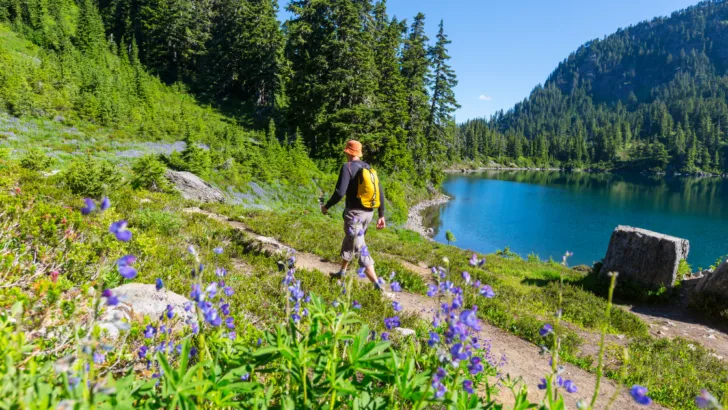
In the end, recreational trails are not just pathways through nature; they are invitations to connect with the earth and discover the wonders that lie beyond. They hold the promise of peace, joy, and a sense of belonging in nature’s grand tapestry, leaving me with a grateful heart and a yearning to return, time and time again.
Day Hiking Trails
Day hiking trails hold a special allure for me, as they offer an invigorating workout while allowing me to return to the comfort of home by day’s end. They strike a perfect balance between physical challenge and the joy of immersing myself in nature’s beauty.
What I love most about day hiking trails is the flexibility they provide. Whether I’m seeking a brisk workout or a more leisurely stroll in a natural wonderland, these trails cater to my desires. Some day hikes offer a simple walk in the woods, surrounded by the soothing sounds of rustling leaves and birdsong. Others present a delightful ascent across a small mountain, with each step leading me to breathtaking viewpoints that make my heart soar.
The moderate difficulty of these trails ensures that I get a good workout, engaging my muscles and elevating my heart rate, all without the commitment of an overnight stay in the wilderness. This flexibility is particularly appealing when my schedule is tight, as I can embark on a fulfilling outdoor adventure without sacrificing the comforts of home.
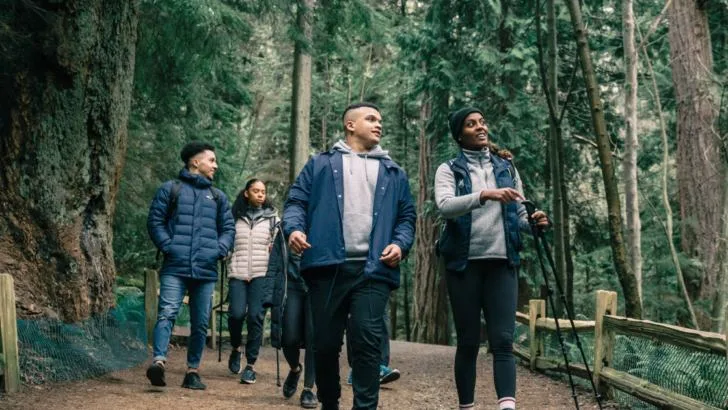
As I venture forth on these day hikes, I find myself immersed in the wonders of nature. The ever-changing landscapes unfold before me, from dense forests to open meadows and rocky outcrops. Each trail brings new surprises and delights, making each hike a unique and unforgettable experience.
Day hiking trails also offer a sense of accomplishment. Conquering a challenging section or reaching the summit of a small mountain fills me with a profound sense of achievement. The beauty of these trails lies not just in the physical workout they provide but in the mental and emotional rewards they offer.
Additionally, day hiking trails provide an opportunity for spontaneous adventures with friends and family. I often find myself inviting loved ones to join me, creating cherished memories and strengthening our bonds as we explore together.
In the end, day hiking trails become a sanctuary for me—a place to escape the busyness of everyday life and reconnect with the serenity of nature. The sense of freedom and accomplishment, coupled with the stunning beauty of the natural world, makes day hiking an experience I treasure deeply. I cherish the chance to return home with a rejuvenated spirit, a heart filled with gratitude, and the assurance that there are always more day hiking trails waiting to be explored.
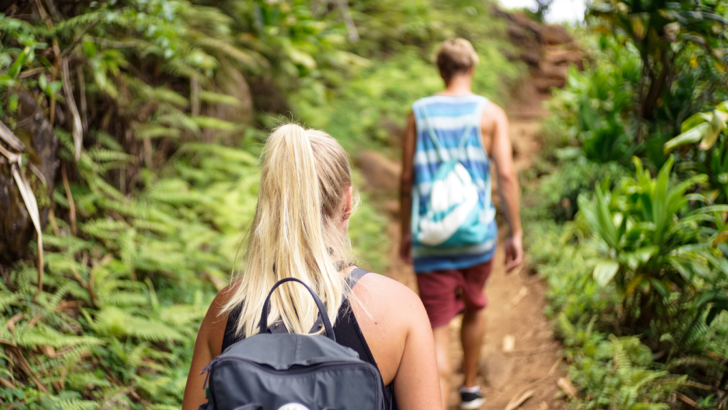
Multi-Use Trails
Multi-use trails offer a unique and inclusive outdoor experience, catering to hikers, bikers, and horseback riders alike. These trails are thoughtfully designed to accommodate different types of recreational activities, fostering a sense of community and shared enjoyment of nature.
One of the distinctive features of multi-use trails is their wider and flatter terrain compared to other hiking trails. This design choice ensures that these trails are accessible to a wider range of individuals, making them ideal for beginners or those seeking a less physically demanding hike. The gentle slopes and smooth paths create a comfortable environment for all users, allowing them to focus on the beauty of their surroundings and the joy of their chosen activity.
As I venture onto these trails, I appreciate the opportunity to encounter fellow outdoor enthusiasts engaging in various activities. The harmonious coexistence of hikers, bikers, and horseback riders creates a vibrant atmosphere, with each group sharing in the love of nature and adventure. I find it heartwarming to witness people of diverse backgrounds coming together, united by their shared appreciation for the great outdoors.
However, the popularity of multi-use trails can sometimes lead to increased foot traffic. The sheer number of users may make it challenging to maintain a consistent pace, especially during peak hours or weekends. Navigating through the more crowded sections can require patience and attentiveness, as we all respect each other’s space and prioritize safety.
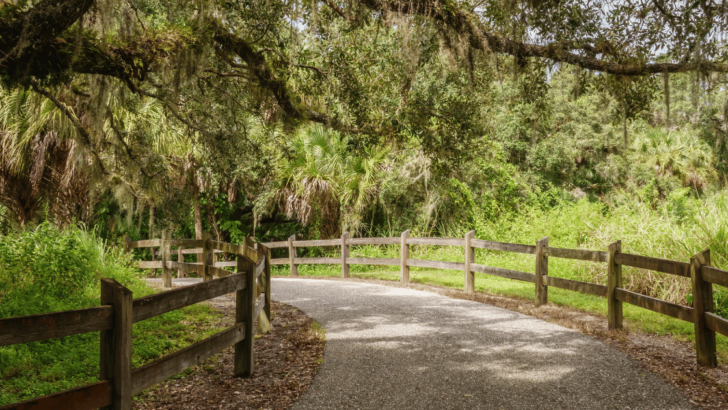
Despite the occasional crowd, the camaraderie and sense of community on multi-use trails make the experience truly special. I often strike up conversations with fellow hikers, exchange stories with bikers, and marvel at the elegance of horseback riders passing by. This social aspect adds a delightful dimension to the hike, leaving me with a feeling of connectedness and belonging.
Multi-use trails also offer an opportunity to learn and adapt to various recreational activities. As a hiker, I become more aware of bikers and horseback riders, understanding their needs and sharing the trail harmoniously. The experience fosters mutual respect and empathy, cultivating an environment of inclusivity and understanding.
In the end, multi-use trails embody the essence of unity in diversity. They allow us to experience the beauty of nature in our own unique ways while sharing joy with others who have chosen different paths. Whether I’m hiking, biking, or simply appreciating the beauty around me, multi-use trails remain a treasure trove of outdoor enjoyment, fostering a spirit of togetherness and appreciation for the breathtaking landscapes we are blessed to explore.
Backcountry Trails
Backcountry trails hold a special allure for seasoned hikers like myself who crave the ultimate adventure and the thrill of pushing our limits. Designed to challenge and inspire, these trails are not for the faint of heart. They are reserved for those with experience and a burning desire to test their physical and mental capabilities.
One of the defining characteristics of backcountry trails is their rugged and remote nature. These paths take us deep into the heart of the untouched wilderness, far from the familiar comforts of civilization. As I set foot on these untamed trails, I am humbled by the raw beauty of nature surrounding me, with every step revealing awe-inspiring vistas and hidden wonders.
The terrain of backcountry trails is a testament to their challenging nature. Steep ascents and descents demand unwavering determination and physical prowess. The rough and rocky terrain underfoot tests our balance and agility, making each step an exercise in calculated precision. Yet, it’s precisely this formidable terrain that adds an air of excitement and accomplishment to every mile conquered.
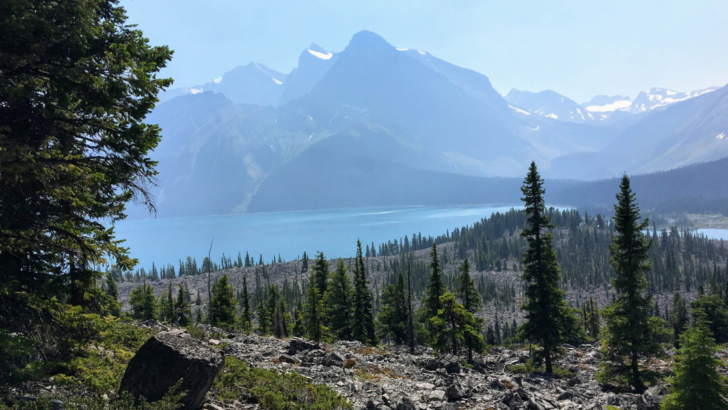
Backcountry trails can extend for several miles, requiring us to embark on journeys that push the boundaries of our endurance. These trails are not merely a walk in the park; they become epic odysseys that take us on a profound exploration of both nature and ourselves. The challenges we face on these trails serve as catalysts for personal growth and discovery, instilling in us a newfound appreciation for the indomitable spirit within.
The remoteness of backcountry trails brings a sense of solace and a chance to reconnect with the essence of life. As I venture deeper into the wilderness, the cacophony of modern life fades away, replaced by the serenity of nature’s symphony. I find solace in the solitude, allowing me to contemplate and gain a deeper understanding of my place in the grand tapestry of the natural world.
To venture into the backcountry, a high level of physical fitness is essential. The trails demand resilience, stamina, and mental fortitude. But the rewards are boundless—a sense of accomplishment, a newfound appreciation for nature’s raw beauty, and the satisfaction of having explored the untamed realms of the earth.
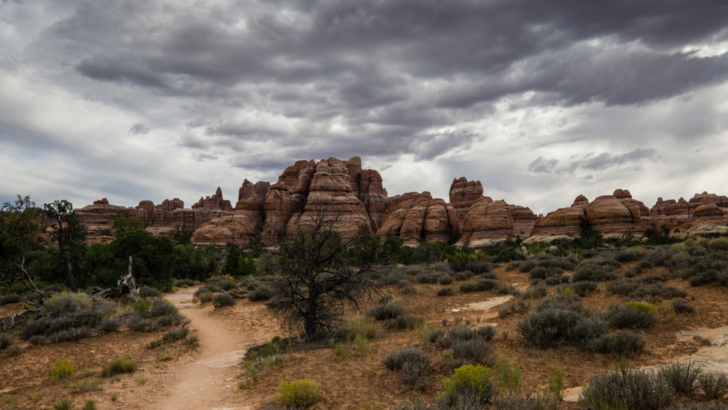
Backcountry trails are a testament to the indomitable spirit of exploration that resides within us. They beckon us with the promise of adventure, urging us to embrace the challenges and savor the triumphs. As I navigate the untamed terrain and forge my path through the wilderness, I am reminded of the inherent connection between humanity and the great outdoors—a connection that comes alive when we dare to venture off the beaten path and into the heart of nature’s untamed wonder.
Summit Trails
Summit trails hold a special allure for adventurers like me who yearn to conquer the lofty heights of mountains and witness the world from their majestic summits. These trails are a testament to human ambition, designed to challenge our physical prowess and awaken our spirit of exploration.
The journey on summit trails begins with an unwavering determination to ascend to the pinnacle. As I set foot on these trails, I brace myself for the steep and challenging terrain that lies ahead. Each step is a testament to my resilience, as I push myself to conquer the ascent. The path is a true test of physical endurance, demanding every ounce of strength and stamina.
Yet, the promise of a breathtaking reward keeps my spirits high—a view from the top that is nothing short of awe-inspiring. As I ascend, the world around me transforms. The landscapes unfurl in all their glory, revealing vistas of unparalleled beauty. The air becomes crisper, the sky more expansive, and the sense of accomplishment more profound with every passing meter.

Summit trails often lead us to the heart of national parks and other wilderness areas. These protected sanctuaries serve as guardians of nature’s most remarkable creations, preserving the pristine beauty of untamed lands. As I hike, I am immersed in the wilderness, surrounded by the untamed majesty of mother nature.
The experience of hiking summit trails is a humbling reminder of our place in the grandeur of the natural world. Each peak conquered is a triumph not only over the mountain but also over the limitations we might have once perceived in ourselves. The summit becomes a symbolic victory, a testament to the indomitable spirit that drives us to seek the extraordinary.
Standing atop the summit, I am in awe of the boundless vistas that unfold before my eyes. The world stretches out below me in all its splendor, inviting contemplation and reflection. At that moment, I feel a profound connection with the earth and a deep sense of gratitude for the privilege of experiencing such breathtaking beauty.
Summit trails embody the essence of adventure and discovery. They beckon us to rise above the ordinary, embrace challenges, and reach new heights—both metaphorically and literally. As I descend, I carry with me the memories of the journey and the inspiration to continue exploring, one summit at a time. For on these trails, I discover not only the beauty of nature but also the strength of the human spirit, forever yearning to soar to new summits and embrace the wonder that lies beyond.

When choosing a hiking trail, it’s essential to consider your fitness level and the intensity of the workout you want to achieve. If you’re new to hiking, start with a recreational or day hiking trail and work your way up to more challenging trails as your fitness improves. By choosing the right trail, you can enjoy the great outdoors while getting a fantastic aerobic workout.
The Importance Of Proper Hiking Gear, Such As Hiking Boots And A Backpack, For Safety And Comfort
As someone who enjoys hiking, I understand the importance of having the right gear for a safe and comfortable experience. Hiking can be a strenuous activity that requires proper equipment to ensure that you are prepared for any situation that may arise. In this section, I will discuss the importance of proper hiking gear, such as hiking boots and a backpack, for safety and comfort.
Hiking Boots
Hiking boots are essential for any hiker. They provide support, protection, and traction on various terrains. When choosing hiking boots, it is important to consider the type of hiking you will be doing, the terrain you will encounter, and the weather conditions. Hiking boots come in different styles, such as low-cut, mid-cut, and high-cut. Low-cut boots are suitable for light hiking on well-maintained trails, while high-cut boots are ideal for rugged terrain and backpacking. It is also important to choose boots that fit properly and are comfortable to wear for long periods.
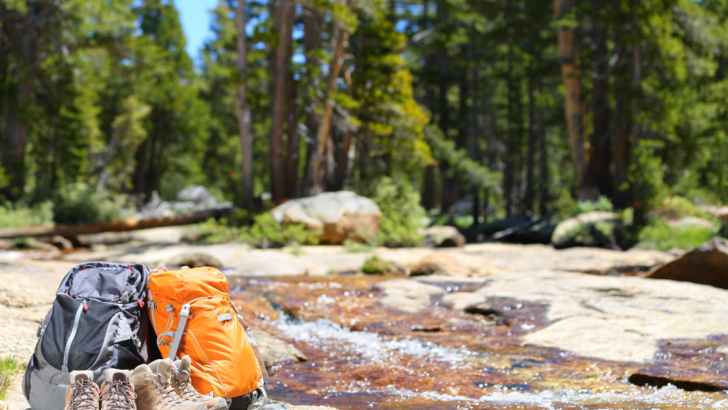
Backpack
A backpack is another essential piece of hiking gear. It allows you to carry all the necessary hiking items, such as food, water, a first aid kit, and extra clothing. When choosing a backpack, it is important to consider the length of your hike, the amount of gear you will need, and the fit of the backpack. A properly fitted backpack should distribute the weight evenly and comfortably across your shoulders, back, and hips.

Other Gear
In addition to hiking boots and a backpack, there are other essential items to consider for a safe and comfortable hiking experience. These include:
- Clothing: Dress appropriately for the weather and terrain. Wear moisture-wicking clothing to keep you dry and comfortable. Avoid cotton, as it retains moisture and can lead to hypothermia in cold weather.
- Navigation: Bring a map and compass, and know how to use them. It is also helpful to bring a GPS device or smartphone with GPS capabilities as a backup.
- Water and Food: Bring enough water and food for the duration of your hike. It is recommended to drink at least one liter of water per hour of hiking.
- First Aid Kit: Bring a basic first aid kit with items such as bandages, antiseptic, and pain relievers.
- Emergency Shelter: Bring a lightweight emergency shelter, such as a space blanket or bivy sack, in case of unexpected weather or injury.
Proper hiking gear is essential for a safe and comfortable hiking experience. Hiking boots and a backpack are two of the most important pieces of gear to consider, but it is also important to bring other essential items such as appropriate clothing, navigation tools, water and food, a first aid kit, and an emergency shelter. By being prepared with the right gear, you can enjoy your hike and stay safe on the trails.
Conclusion
Hiking is a fantastic way to get exercise, enjoy the outdoors, and improve your overall health. Whether you are looking for a low-impact aerobic workout or a more intense anaerobic workout, there is a type of hiking that is right for you. By choosing a trail that is appropriate for your fitness level and wearing proper hiking gear, you can stay safe and comfortable while enjoying the benefits of this great activity.
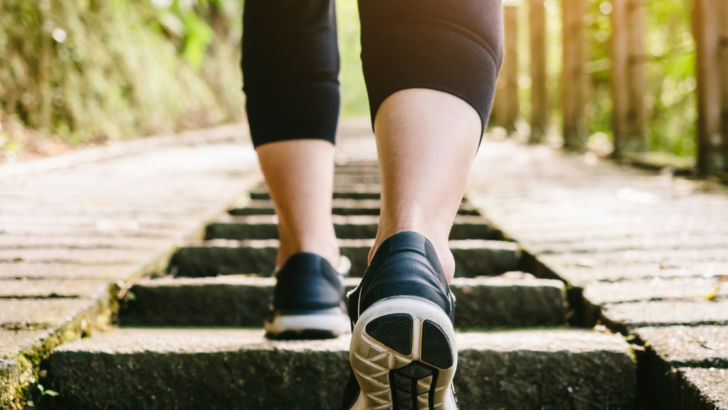
Hiking Is A Great Way To Get Exercise, Enjoy The Outdoors, And Improve Your Overall Health
Hiking is a low-impact aerobic exercise that can help you burn calories, improve your cardiovascular health, and strengthen your muscles. It is also a great way to get outside and enjoy the beauty of nature. Hiking can help reduce stress, boost your mood, and improve your mental health.
Whether You Are Looking For A Low-Impact Aerobic Workout Or A More Intense Anaerobic Workout, There Is A Type Of Hiking That Is Right For You
There are many different types of hiking trails, ranging from easy, flat trails to steep, challenging ones. If you are looking for a low-impact aerobic workout, consider hiking on a flat or gently sloping trail. If you want a more intense anaerobic workout, choose a trail with steep inclines and rugged terrain.
Be Sure To Choose A Trail That Is Appropriate For Your Fitness Level And To Wear Proper Hiking Gear To Stay Safe And Comfortable
Before you hit the trails, be sure to choose a trail that is appropriate for your fitness level. If you are new to hiking, start with an easy trail and work your way up to more challenging ones. It is also important to wear proper hiking gear, including sturdy hiking boots, a hat, and sunscreen, to stay safe and comfortable while you hike.
Resources
- American Hiking Society: https://americanhiking.org/
- The American Heart Association: https://www.heart.org/
- Mayo Clinic: https://www.mayoclinic.org/
- Healthline: https://www.healthline.com/
- Verywell Fit: https://www.verywellfit.com/
- REI Co-op: https://www.rei.com/
Frequently Asked Questions
Is hiking a good aerobic exercise?
Yes, hiking is a great aerobic exercise. It gets your heart rate up and improves your cardiovascular health. Hiking can also help you build endurance and improve your overall fitness level.
How does hiking compare to other aerobic exercises?
Hiking is a low-impact exercise that can be easier on your joints than other high-impact exercises like running. However, hiking can be just as effective at improving your cardiovascular health and burning calories as other aerobic exercises.
What are the benefits of hiking as an aerobic exercise?
Hiking can improve your cardiovascular health, build endurance, and burn calories. It can also help reduce stress and improve your mental health by allowing you to spend time in nature.
Can hiking help improve cardiovascular health?
Yes, hiking can help improve your cardiovascular health by strengthening your heart and lungs. It can also help lower your risk of heart disease, stroke, and other cardiovascular problems.
Is hiking an effective way to burn calories?
Yes, hiking is an effective way to burn calories. The number of calories you burn while hiking depends on factors like your weight, the terrain, and the intensity of your hike. On average, you can burn between 400 and 700 calories per hour while hiking.
What are some tips for maximizing the aerobic benefits of hiking?
To maximize the aerobic benefits of hiking, try to hike at a moderate intensity for at least 30 minutes at a time. You can also add hills or inclines to your hike to increase the intensity. Make sure to wear comfortable shoes and bring plenty of water and snacks to keep your energy levels up.
Is hiking better cardio than running?
Hiking and running are both effective forms of cardio exercise. The best form of cardio for you depends on your personal preferences and fitness goals.
What kind of workout is hiking?
Hiking is a full-body workout that can help improve your cardiovascular health, build endurance, and strengthen your muscles. It can also help you reduce stress and improve your mental health by allowing you to spend time in nature.
